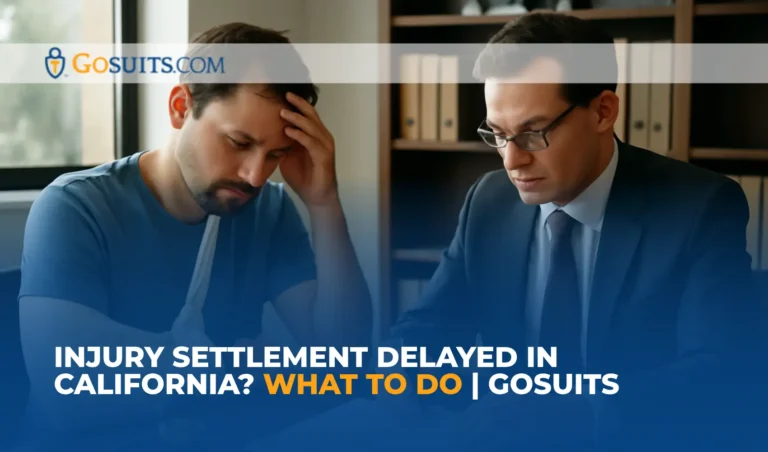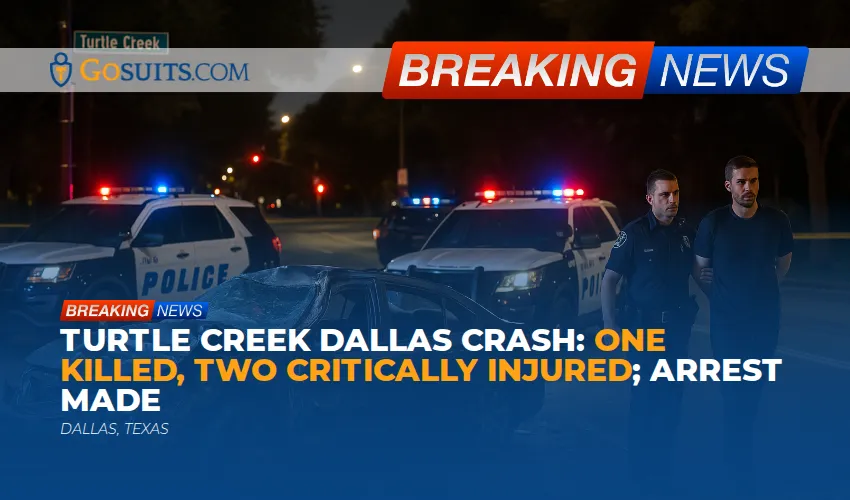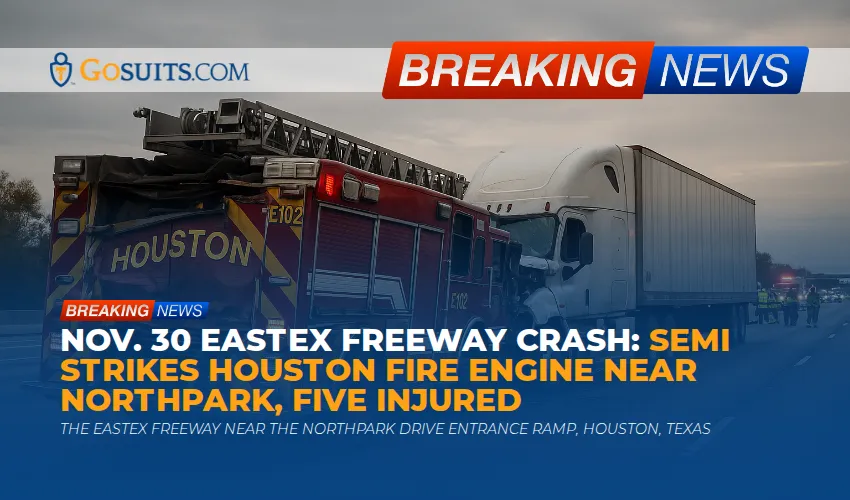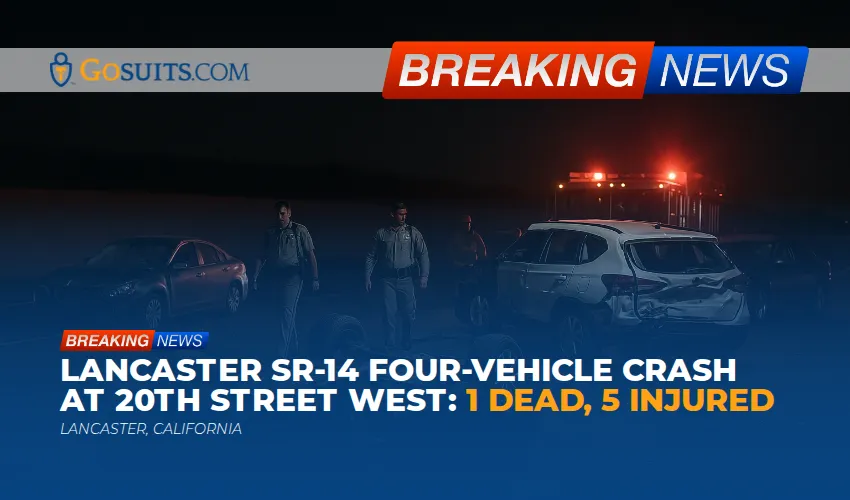- Is your injury settlement delayed in California and what does that mean?
- How long should a California personal injury claim usually take?
- What deadlines do insurers face under California law?
- Why is my settlement taking so long in California?
- How can you speed up an insurance settlement in California?
- How do demand letters and negotiations work in California?
- How do medical treatment and MMI affect your timeline?
- How do liens and subrogation delay settlement payout?
- What if the statute of limitations is approaching in California?
- When is an insurance delay bad faith in California?
- What are typical mediation and litigation timelines in California?
- How fast must an insurer pay after settlement in California?
- What documents and evidence help move your case faster?
- How do defendants and insurers view delays and what do they look for?
- What are the most common FAQs about a California personal injury settlement delay?
- How can GoSuits help if your California injury settlement is delayed?
- Resources
Is your injury settlement delayed in California and what does that mean?
If your California personal injury settlement is delayed, you are not alone. Claims in Los Angeles, San Diego, San Jose, San Francisco, Sacramento, and across the Inland Empire often slow down at key stages like investigation, medical treatment, lien resolution, negotiation, or final payment. A delay can be frustrating when bills are piling up, or when you need repairs, therapy, or time off work.
It helps to distinguish normal processing time from red flags:
- Normal timing: treatment and recovery must stabilize before anyone can fairly value your claim. Liens must be verified and reduced. Insurers need documentation and time to evaluate.
- Possible red flags: long gaps in communication, missed regulatory response deadlines, unexplained requests for duplicative records, or failure to issue payment after a signed release.
Injury remains a major health and economic issue. Nationally, unintentional injury is a leading cause of death for ages 1 to 44, reflecting how often serious injuries disrupt lives and finances while claims move forward CDC. In California’s dense urban areas like the Bay Area and Central Valley corridors, collisions and other incidents frequently lead to claims that must navigate state rules, insurer practices, and court timelines.

How long should a California personal injury claim usually take?
There is no single standard timeline, but many claims follow this arc:
- Investigation and documentation: 2 to 8 weeks to gather police reports, photos, witness statements, and initial medical records in places like Orange County, Riverside, San Bernardino, Long Beach, Fresno, Bakersfield, Oakland, Anaheim, and Irvine.
- Treatment and MMI: several months for non-surgical injuries, longer for surgical or complex cases. Settlement talks usually start after maximum medical improvement, because that is when a full picture of damages is known.
- Negotiation: 1 to 3 months for straightforward cases after a comprehensive demand, but longer if liability is disputed or injuries are complex.
- Lien resolution: 2 to 12+ weeks, depending on Medicare, Medi-Cal, private plans, or hospital liens.
- Payment: in California, once a claim is accepted and the amount is determined and you have provided the release, the insurer generally must pay within 30 days under state regulations 10 CCR §2695.7(h).
If settlement negotiations fail or the statute of limitations is near, a lawsuit may be filed. California law requires service within three years of filing and trial within five years of filing, with specific exceptions CCP §583.210, CCP §583.310. Most civil cases still resolve before trial. Federal statistics show that only a small percentage of civil cases go to trial, which reflects the broader trend toward settlement and pretrial resolution BJS.
What deadlines do insurers face under California law?
California’s Fair Claims Settlement Practices Regulations set concrete timelines for insurers evaluating personal injury claims:
- Respond to communications: within 15 calendar days of receiving communications pertinent to the claim 10 CCR §2695.5(b).
- Acknowledge receipt of claim forms: within 15 days and begin investigation immediately 10 CCR §2695.5(e), §2695.7(a).
- Accept or deny claims: within 40 days after receiving proof of claim, or provide a written explanation if more time is needed, with updates every 30 days 10 CCR §2695.7(b), (c).
- Pay after settlement: within 30 days after coverage and amount are determined and any release is received 10 CCR §2695.7(h).
California also defines unfair claims practices in statute, such as failing to adopt reasonable standards for prompt claim investigation Ins. Code §790.03(h).
Why is my settlement taking so long in California?
Common, legitimate reasons include:
- Ongoing medical care: Valuing future treatment and impairment is hard until your condition stabilizes.
- Disputed liability: Pure comparative fault in California means both sides may argue over percentages of responsibility, which directly affects value Li v. Yellow Cab.
- Incomplete records: Missing bills, diagnostic studies, or wage proof slow evaluation.
- Multiple insurers: When several carriers share risk or coverage, it takes time to coordinate.
- Liens and subrogation: Medicare, Medi-Cal, private health plans, and hospitals must verify and sometimes reduce liens before final distribution.
- Minor’s settlement approval: Court approval is required for minors, adding a procedural step Cal. Rules of Court 7.950, 7.955.
Possible red flags include an adjuster missing the 40-day decision window without proper updates, repeated requests for the same records, or failure to pay within 30 days after you sign a release. If you see these signs, discuss next steps with counsel familiar with the Los Angeles, San Diego, San Jose, or San Francisco markets.
How can you speed up an insurance settlement in California?
You can often reduce delays with organized, proactive steps:
- Request claim status in writing: Ask for a written update if 40 days have passed since submitting a complete proof of claim. Reference the Fair Claims Settlement Practices Regulations and request the date of the next decision update 10 CCR §2695.7(b)–(c).
- Send a complete, indexed demand: Include police report, photos, medical records and bills, wage documentation, and a clear liability analysis. Organized packages reduce back-and-forth.
- Close the medical loop: Ask providers for final narrative reports that address diagnosis, causation, prognosis, impairment, and future care costs.
- Address liens early: Open files with Medicare, Medi-Cal, or private plans as soon as possible and monitor regularly.
- Use settlement tools: In litigation, a statutory offer to compromise can increase pressure to resolve. California’s offer-of-judgment rule can carry cost and interest consequences if a party fails to do better at trial CCP §998, Civ. Code §3291.
- Escalate appropriately: If communications stall, consider mediation or filing suit to protect your rights under the statute of limitations.
If you are dealing with a slow insurance adjuster in California, structured follow-ups, calendared deadlines, and documented submissions often move the file. In regions near you, including the Bay Area, Central Valley, and Inland Empire, local medical and court backlogs can add time, so starting early helps.
How do demand letters and negotiations work in California?
A demand letter is your opportunity to present a clear, evidence-based request:
- Timing: Usually after MMI or when long-term prognosis is known.
- Content: Summary of facts, liability analysis with citations to the California Vehicle Code or premises standards as applicable, injury details, treatment history, itemized economic losses, non-economic impacts, and supporting exhibits.
- Ask: A reasoned settlement number and a deadline for response that aligns with California’s 40-day evaluation window for proof of claim.
Negotiation is iterative. Expect the insurer to request clarifications, raise comparative fault, or dispute medical causation. Both sides weigh risks, costs, time, and the evidence. Defendants will consider whether surveillance, prior claims, or social media undermine damages; plaintiffs will focus on consistency of medical proof and credible testimony. Settlement can occur pre-suit, during claims, or after filing.
How do medical treatment and MMI affect your timeline?
Settlement valuation depends on stable medical status. If you settle too early, you risk underestimating future care, which could include therapy, injections, or surgery. If you wait too long without good reason, the insurer may argue you failed to mitigate damages.
Document treatment regularly. Ask your physicians for opinions linking your condition to the incident and detailing the expected future course. If you are in Los Angeles or San Diego and face scheduling lags, use written requests to keep your record complete while you wait for appointments.
How do liens and subrogation delay settlement payout?
Before funds can be disbursed, lienholders often must be paid or agree to reductions:
- Medicare: Medicare has a statutory right of reimbursement when it pays conditionally for injury-related care. The Medicare Secondary Payer rules apply, and conditional payments must be resolved after liability insurance pays 42 U.S.C. §1395y(b), CMS.
- Medi-Cal: California may assert a lien for benefits paid and must be notified about third-party liability recoveries DHCS Personal Injury.
- ERISA and private health plans: Employer plans may seek reimbursement. Plan terms and federal law can affect how and whether reductions apply DOL ERISA.
- Hospital liens: California’s Hospital Lien Act allows hospitals to claim a portion of third-party recoveries under specific rules Civ. Code §§3045.1 et seq..
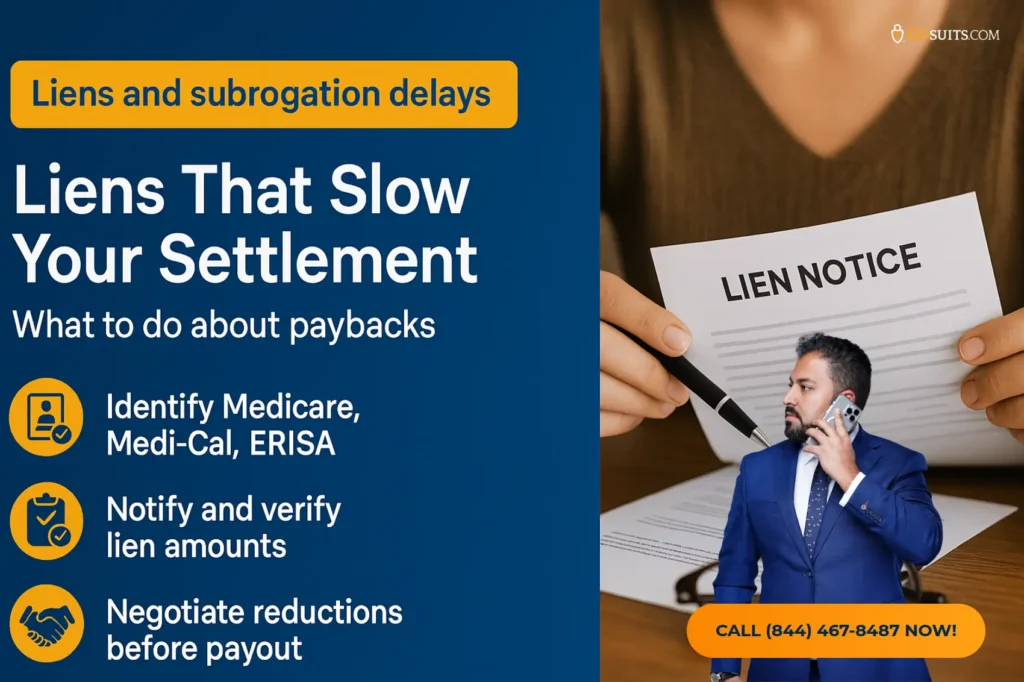
Because lien verification and accounting take time, opening files early and sending periodic updates can shorten the path to disbursement.
What if the statute of limitations is approaching in California?
Under California law, you typically have two years from the date of the injury to file a lawsuit for personal injury CCP §335.1. There are exceptions that can shorten or extend time, such as claims against public entities that require a government claim within a much shorter window. If the deadline is near, negotiations should not replace timely filing. After filing, you generally have up to three years to serve the defendant and five years to bring the case to trial, subject to statutory exceptions CCP §583.210, §583.310.
If you are in the Bay Area, Central Valley, or Inland Empire and are worried about deadlines near me in your county, check local court rules for case management timelines and consider seeking legal help without delay.
When is an insurance delay bad faith in California?
California recognizes that insurers must act fairly and in good faith toward their insureds. Unfair claims settlement practices are listed in the Insurance Code, such as failing to adopt reasonable claim investigation standards Ins. Code §790.03(h). Private lawsuits directly under §790.03 are not allowed, but common-law bad faith claims may be available in certain insurer-insured relationships Moradi-Shalal v. Fireman’s Fund, Gruenberg v. Aetna.
Indicators that suggest a deeper review is needed include:
- Missed regulatory decision windows without written reasons or updates every 30 days.
- Failure to pay within 30 days after a signed release and final determination of amount 10 CCR §2695.7(h).
- Misrepresenting facts or policy provisions during negotiations.
The analysis differs when you are a third-party claimant versus the policyholder. Talk with counsel about your specific posture, options, and potential remedies.
What are typical mediation and litigation timelines in California?
Once a lawsuit is filed, your case enters the court-managed track:
- Pleadings and early discovery: 3 to 6 months after a complaint is filed and served.
- Fact discovery and depositions: 6 to 12 months depending on case complexity and availability of witnesses and experts.
- Mediation: often scheduled after key depositions or written discovery, sometimes within 6 to 12 months of filing.
- Trial readiness: civil cases must be brought to trial within five years of filing, with various exceptions CCP §583.310.
Settlement remains common at each stage. California’s offer-of-judgment rules create incentives that can speed resolution, especially when parties face potential cost and interest shifts under CCP §998 and Civil Code §3291.
How fast must an insurer pay after settlement in California?
When coverage and the amount of the claim are determined, and the insurer receives any required release, California regulations generally require payment within 30 days 10 CCR §2695.7(h). If payment does not arrive, a polite written follow-up citing the regulation can be effective. If payment remains delayed, discuss next steps with your lawyer.
For claims that proceed to judgment, California provides 10 percent annual interest on most money judgments in state court, which can influence timing decisions in litigation CCP §685.010.
What documents and evidence help move your case faster?
Organized evidence reduces insurer delays and increases negotiation leverage:
- Accident documentation: police reports, photos, video, and witness info.
- Medical records and bills: ER, urgent care, primary care, imaging, therapy, and specialist notes, with itemized bills and CPT/ICD codes if available.
- Work losses: employer letter, pay stubs, W-2 or 1099s, and a physician’s work restriction note.
- Daily impact notes: brief logs on pain, sleep, mobility, and activities you cannot do.
- Prior medical history summaries: to address causation and show transparency.
- Lien correspondence: Medicare, Medi-Cal, ERISA plan, and hospital lien letters and updates.

How do defendants and insurers view delays and what do they look for?
Understanding the defense perspective can help you anticipate and address issues:
- Causation questions: gaps in care, prior injuries, or unrelated conditions may be emphasized to argue a lower payout.
- Comparative fault: California’s comparative negligence means a percentage attributed to you reduces recovery accordingly Li v. Yellow Cab.
- Mitigation: long gaps without care or failure to follow medical advice can be used to argue you did not mitigate damages.
- Documentation: missing test results, inconsistent histories, and unsupported wage loss claims trigger additional requests that prolong review.
Defendants also weigh the cost of litigation, potential interest exposure after certain offers, and jury variability in counties like Los Angeles or San Francisco. A thorough, well-documented file gives you momentum.
What are the most common FAQs about a California personal injury settlement delay?
Why is my settlement taking so long in California?
Frequent causes include ongoing treatment, disputes over liability or causation, incomplete records, multiple insurers, and lien resolution with Medicare, Medi-Cal, or private health plans. Regulatory decision windows require the insurer to act or update you, which can be used to prompt movement 10 CCR §2695.7(b)–(c).
What can I do right now if the insurance settlement is taking too long in California?
Send a concise written status request, provide any missing records, obtain a final medical report, open or update lien files, and consider setting a mediation date. If the statute of limitations is near, filing suit preserves your rights CCP §335.1.
How do I speed up an insurance settlement near me in Los Angeles, San Diego, or the Bay Area?
Provide a complete, indexed demand with clear exhibits; follow up on the 40-day decision window; and keep lienholders informed. In litigation, consider strategic offers under CCP §998.
What if the adjuster keeps asking for more time?
California allows extensions if the insurer provides written reasons and updates every 30 days. Ask for specifics on what is outstanding and provide it if appropriate 10 CCR §2695.7(c).
How long does the insurer have to pay after we settle in California?
Generally 30 days after the amount is determined and the insurer receives the release 10 CCR §2695.7(h).
Will taxes delay my settlement?
Tax questions do not usually delay payment, but some clients discuss tax treatment with a tax professional. Federal law excludes from gross income certain damages received on account of personal physical injuries or physical sickness, with important exceptions 26 U.S.C. §104.
Why does a minor’s settlement take longer?
California requires court approval for a minor’s compromise and review of fees and costs, which adds a scheduling step Cal. Rules of Court 7.950, 7.955.
Do most cases settle or go to trial?
Only a small percentage of civil cases reach trial. Many resolve through settlement or pretrial proceedings, consistent with national data on civil case outcomes BJS.
Is delay by itself proof of bad faith?
No. Some delays are justified. But missed regulatory deadlines without explanations, misrepresentations, or failure to pay after a release may require further action. California recognizes common-law bad faith in insurer-insured relationships, although direct suits under the unfair practices statute are limited Moradi-Shalal, Gruenberg.

What does a free consultation with a California personal injury lawyer cover?
Typically, an attorney reviews facts, injuries, treatment, insurance coverages, deadlines, and next steps to move your claim forward. This can help you understand options to reduce delay without risking missed legal deadlines.
How can GoSuits help if your California injury settlement is delayed?
We focus on helping people across California resolve personal injury claims when delays are getting in the way of recovery. Our practice covers Los Angeles, San Diego, San Jose, San Francisco, Sacramento, Orange County, Riverside, San Bernardino, Long Beach, Fresno, Bakersfield, Oakland, Anaheim, Irvine, and communities throughout the Bay Area, Central Valley, and Inland Empire.
Here is how a free consultation with a California personal injury lawyer at GoSuits can help you when your insurance settlement is taking too long:
- Case mapping: We review your timeline, records, and the insurer’s responses against California’s Fair Claims Settlement Practices Regulations and court deadlines so you know where the file stands.
- Evidence plan: We identify the missing proof that insurers often wait for and create an action list to close gaps quickly.
- Lien strategy: We open, monitor, and negotiate Medicare, Medi-Cal, ERISA, and hospital liens to shorten the path to disbursement.
- Negotiation pressure: We use tools like structured demands and, when appropriate, statutory offers to encourage timely resolution.
- Litigation readiness: If filing suit is needed to protect your rights, we discuss the process, timeline, and options for mediation or trial.
GoSuits is a technology-driven California injury firm. We built exclusive proprietary software that centralizes records, deadlines, and communications to move cases faster and present clean, decision-ready demands. Technology speeds the work, but your relationship is personal: every client is assigned a designated attorney. We do not use case managers, and you have direct access to your lawyer throughout your case.
Our team brings more than 30 years of combined experience across personal injury, wrongful death, premises liability, rideshare and commercial crashes, and related civil claims. We have tried cases, and trial experience can help in settlement because insurers evaluate risk based on courtroom readiness. You can see a sample of past results and case summaries at gosuits.com/prior-cases. Past outcomes do not predict future results, but they show how strategic preparation and presentation can influence resolution.
Whether your case is in Los Angeles County, a Bay Area venue, the Central Valley, or the Inland Empire, our approach aims to move your file efficiently and protect your rights under California law. If your injury settlement is delayed in California, we are available to talk through practical next steps in a free consultation.
Resources
- California Fair Claims Settlement Practices Regulations, 10 CCR §§2695.1 et seq.
- Cal. Insurance Code §790.03(h) Unfair Claims Settlement Practices
- Cal. Code Civ. Proc. §335.1 Statute of Limitations for Personal Injury
- Cal. Code Civ. Proc. §583.210 Service Within Three Years
- Cal. Code Civ. Proc. §583.310 Five-Year Trial Rule
- Cal. Code Civ. Proc. §998 Offer to Compromise
- Cal. Civil Code §3291 Prejudgment Interest After §998 Offer
- Cal. Code Civ. Proc. §685.010 Postjudgment Interest
- California Courts: Minor’s Compromise and Attorney Fees Rules
- Li v. Yellow Cab Co. of California, 13 Cal.3d 804
- Moradi-Shalal v. Fireman’s Fund Ins. Co., 46 Cal.3d 287
- Gruenberg v. Aetna Ins. Co., 9 Cal.3d 566
- California DHCS Personal Injury Program and Medi-Cal Liens
- Medicare Secondary Payer Statute, 42 U.S.C. §1395y(b)
- CMS: Medicare Secondary Payer and Conditional Payments
- U.S. Department of Labor: ERISA Overview
- California Hospital Lien Act, Civil Code §§3045.1 et seq.
- 26 U.S.C. §104 Tax Treatment of Injury Settlements
- CDC Injury Key Data
- BJS: Civil Bench and Jury Trials in State Courts
